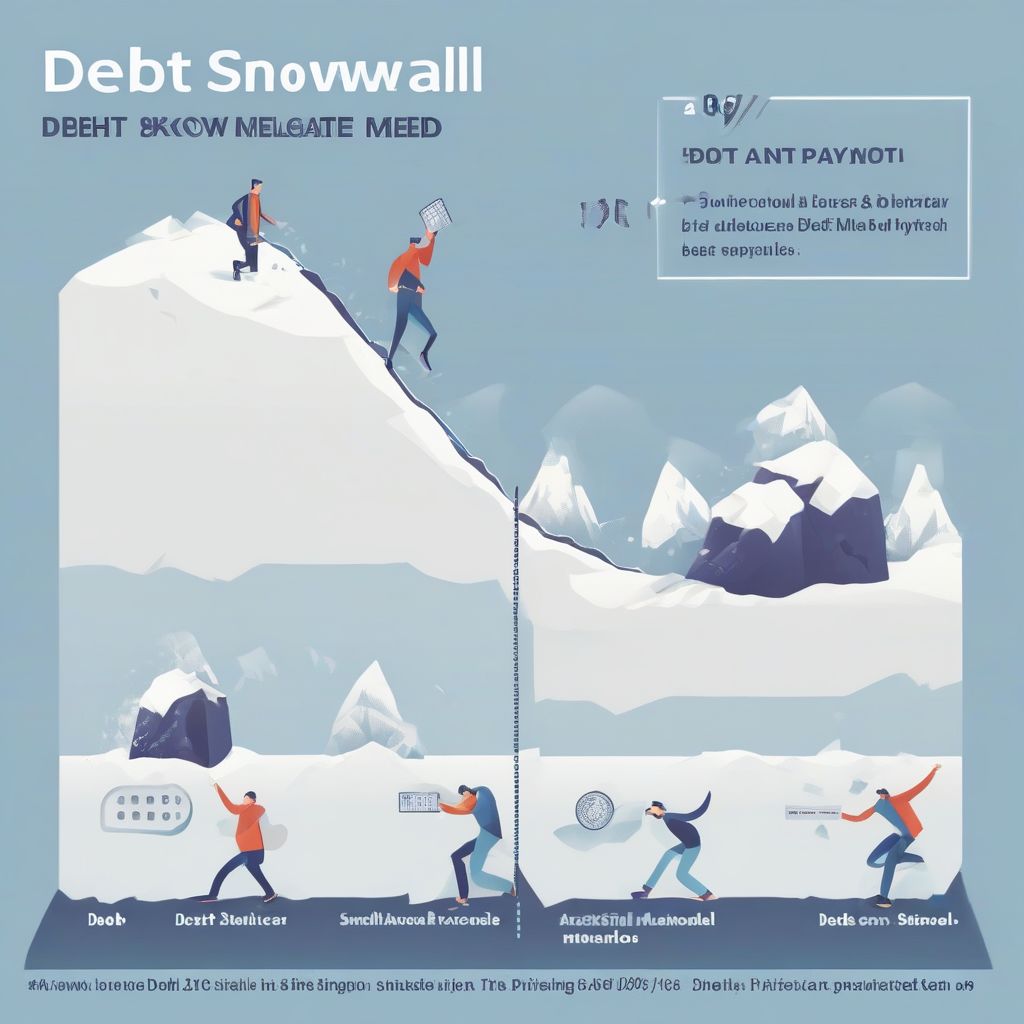Imagine finally achieving financial freedom, no longer burdened by looming debt payments. It’s a dream many of us share. But with various debt payoff strategies available, choosing the right one can feel overwhelming. Two popular methods often debated are the debt snowball and the debt avalanche. Which one is the key to unlocking your financial freedom faster? Let’s dive into the nitty-gritty of each method and uncover which approach best suits your personality and financial situation.
Understanding the Debt Snowball Method
The debt snowball method focuses on building momentum and motivation. Like rolling a snowball downhill, you start small and gradually gain traction. Here’s how it works:
- List your debts: Organize all your debts from smallest balance to largest, regardless of interest rates.
- Minimum payments: Make minimum payments on all debts except the smallest.
- Attack the smallest: Throw every extra dollar you can at the smallest debt until it’s eliminated.
- Snowball effect: Once the smallest debt is paid off, take the money you were putting towards it and add it to the minimum payment of the next smallest debt. Repeat this process until all debts are vanquished.
The Psychology of the Snowball
The debt snowball’s strength lies in its psychological impact. Early wins provide a sense of accomplishment and fuel motivation to continue the debt payoff journey. “The power of small victories is undeniable,” says financial expert Dave Ramsey, a strong proponent of the snowball method. He argues that the emotional boost from paying off small debts outweighs the potential interest savings of other methods.
Understanding the Debt Avalanche Method
The debt avalanche method, on the other hand, prioritizes logic and maximizing interest savings. It’s like strategically targeting the biggest avalanche to minimize its impact. Here’s how it works:
- List your debts: Organize all your debts from highest interest rate to lowest, regardless of balance size.
- Minimum payments: Make minimum payments on all debts except the one with the highest interest rate.
- Target high interest: Allocate all extra funds to the debt with the highest interest rate until it’s paid off.
- Cascade down: Once the highest-interest debt is eliminated, move on to the debt with the next highest interest rate. Repeat this process until debt-free.
The Logic of the Avalanche
The debt avalanche method mathematically minimizes the total interest paid over the life of your loans. By tackling high-interest debts first, you prevent them from accruing excessive interest charges. This method is often favored by financial advisors who prioritize long-term savings.
Debt Snowball vs. Debt Avalanche: Head-to-Head Comparison
| Feature | Debt Snowball | Debt Avalanche |
|---|---|---|
| Prioritization | Smallest balance | Highest interest rate |
| Focus | Motivation and momentum | Interest savings |
| Psychological impact | High, provides quick wins | Lower, may take longer to see progress |
| Total interest paid | Typically higher | Typically lower |
| Best for | Those easily discouraged by debt | Those motivated by logic and maximizing savings |
Which Method is Right for You?
The “best” method depends on your individual circumstances and personality. Consider these factors:
- Motivation levels: If you struggle with staying motivated, the snowball method might be a better fit. The quick wins can keep you on track.
- Debt amounts: If you have several small debts and one large, high-interest debt, the snowball method can help you gain momentum before tackling the larger debt.
- Interest rate disparities: If your debts have significantly different interest rates, the avalanche method could save you a substantial amount of money in the long run.
- Time horizon: If you’re aiming to become debt-free as quickly as possible, regardless of interest savings, the avalanche method may be the faster route.
Hybrid Approach: A Blend of Both Worlds
You don’t necessarily have to choose strictly between the snowball and avalanche methods. A hybrid approach can combine the benefits of both. For example, you could start with the snowball method to gain momentum and then switch to the avalanche method once you’ve eliminated a few smaller debts.
Beyond the Methods: Additional Tips for Debt Management
Regardless of which method you choose, these tips can help you accelerate your debt payoff journey:
- Create a budget: Track your income and expenses to identify areas where you can cut back and free up more money for debt repayment.
- Increase your income: Explore opportunities to earn extra income, such as a side hustle or selling unused items.
- Negotiate lower interest rates: Contact your creditors and see if they’re willing to lower your interest rates.
- Consolidate your debt: Debt consolidation can simplify your payments and potentially lower your interest rates.
 Debt Snowball vs. Debt Avalanche
Debt Snowball vs. Debt Avalanche
Conclusion
Choosing between the debt snowball and debt avalanche methods is a personal decision. There’s no one-size-fits-all answer. Consider your personality, financial situation, and motivation levels to determine which strategy will best empower you to achieve your financial goals. By understanding the nuances of each method and implementing additional debt management strategies, you can pave the way towards a debt-free future. What are your thoughts on these debt repayment strategies? Share your experiences and insights in the comments below!



